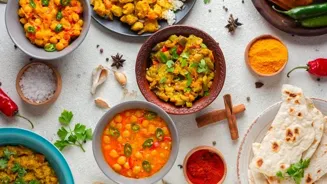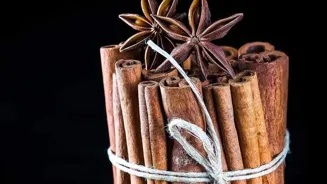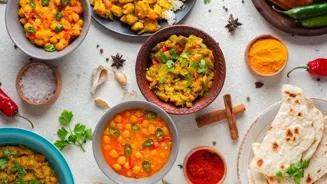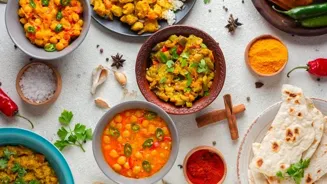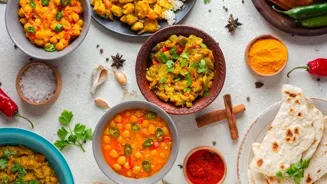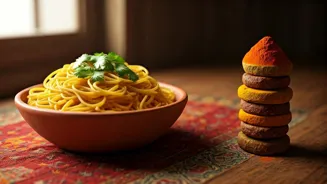Unlock the vibrant world of Indian spices! Learn about 10 essential staples for your kitchen. Enhance your cooking skills and elevate your dishes with these aromatic ingredients. Discover the magic of Indian cuisine!
Namaste, spice lovers! Are you looking to bring the magic of Indian cooking into your own home? Maybe you're tired of bland food and want to add some masala to your life? Well, you've come to the right place!
Indian cuisine, with its vibrant colours, intoxicating aromas, and incredible flavours, is truly a culinary adventure. And the secret to unlocking this delicious world lies in understanding the fundamental Indian spices.
Don't be intimidated by the seemingly endless array of spices at your local grocery store. Starting with a core collection of essential spices is the key. This guide will introduce you to 10 staple spices that every Indian kitchen (and yours!) should possess.
We'll explore their uses, how to store them, and even some quick tips for incorporating them into your cooking. So, get ready to embark on a flavourful journey and transform your everyday meals into extraordinary culinary creations! Let's dive into the wonderful world of Indian spices!
Turmeric: a powerhouse spice for health and flavor in cooking
First up, we have Turmeric (Haldi). Turmeric is more than just a pretty yellow colour; it's a powerhouse of health benefits. Known for its anti-inflammatory and antioxidant properties, turmeric is a must-have in any kitchen.
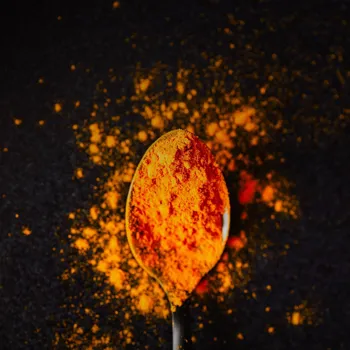
You'll find it used in everything from lentil soups (dal) and vegetable curries to even being added to milk for a comforting drink. When buying turmeric, opt for the whole root if possible and grind it yourself for the freshest flavour.
Otherwise, store your turmeric powder in an airtight container in a cool, dark place to maintain its potency. Pro Tip: Always add turmeric early in the cooking process to allow its flavours to fully develop.
Remember that a little goes a long way due to its potent coloring properties so be careful of quantities for usage, otherwise you may end up with a dish that looks unappetizing despite the good flavor!
Cumin: earthy spice for Indian dishes, seeds tempered in oil, pairs with vegetables
Next on our list is Cumin (Jeera). Cumin is an earthy and warming spice that adds a distinct flavour to countless Indian dishes. It's available in both seed and powder form.
Cumin seeds are often tempered in hot oil at the beginning of cooking, releasing their aromatic oils and infusing the dish with flavour. Ground cumin is commonly used in spice blends and rubs.
This spice pairs well with vegetables like potatoes, cauliflower, and eggplant, and it's an essential ingredient in dishes like jeera rice (cumin rice). To maximize the flavour of cumin seeds, try lightly toasting them in a dry pan before using.
Store cumin seeds and powder in airtight containers in a cool, dry place. Their flavour may reduce over time, but they are more likely to add flavour if fresh.
Coriander: versatile spice in seeds & leaves, adds flavor to dishes
Coriander (Dhania) is a wonderfully versatile spice that comes in two forms: seeds and fresh leaves (cilantro). Coriander seeds have a citrusy and slightly sweet flavour, while the fresh leaves offer a bright and refreshing taste.
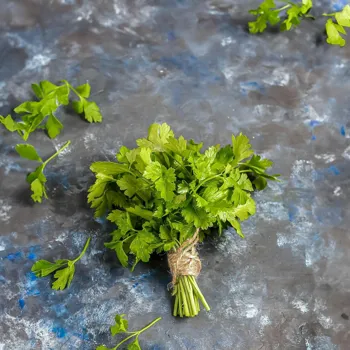
Ground coriander seeds are a common ingredient in curry powders and spice blends. They add depth and complexity to vegetarian dishes. Fresh coriander leaves are typically used as a garnish, adding a final burst of freshness and visual appeal.
When buying coriander seeds, look for whole ones and grind them yourself for the best flavour. Store both whole coriander seeds and ground coriander in airtight containers in a cool, dark place.
Coriander leaves should be stored in the refrigerator, wrapped in paper towels to absorb excess moisture.
Mustard seeds add bold flavor to dishes; store them carefully
Now, let's talk about Mustard Seeds (Rai). These tiny seeds pack a powerful punch of flavour. There are three main types of mustard seeds: black, brown, and yellow. Black mustard seeds are the most pungent, while yellow mustard seeds are the mildest.
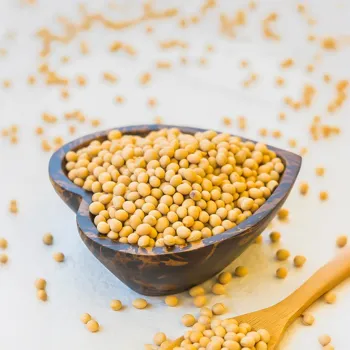
In Indian cooking, mustard seeds are often tempered in hot oil, where they pop and crackle, releasing their distinct flavour. Mustard seeds are an essential ingredient in South Indian dishes like sambhar and idli podi. They are also used to flavour pickles and chutneys.
Store mustard seeds in airtight containers in a cool, dark place. Keep in mind that their flavour intensifies when heated, so use them judiciously. It's important to close it tightly to prevent insects and other issues.
Cardamom: Queen of spices, green for all, black for stews
Cardamom (Elaichi), often called the "queen of spices," is prized for its aromatic and slightly sweet flavour. There are two main types of cardamom: green and black. Green cardamom is the more common and versatile, used in both sweet and savoury dishes.
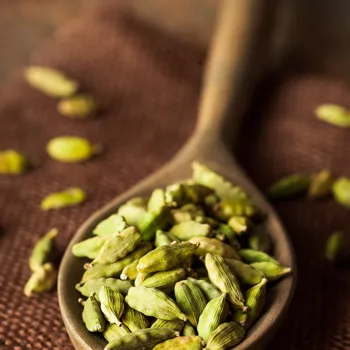
Black cardamom has a smokier and more intense flavour, often used in hearty stews and biryanis. Cardamom pods can be used whole to infuse dishes with flavour, or the seeds can be ground and added to recipes. It's common to see it used in chai, kheer and even biriyani.
Store cardamom pods in airtight containers in a cool, dark place. Ground cardamom loses its flavour quickly, so it's best to grind it fresh as needed. When using cardamom in desserts, consider bruishing it slightly to gain the most flavor from the pod.
Dried red chillies add heat and flavor to Indian dishes
Our next spice is Dried Red Chillies (Lal Mirch). This one brings the heat! Dried red chillies are essential for adding spice and depth of flavour to Indian dishes. They come in various levels of heat, from mild to extremely spicy.
Some popular varieties include Kashmiri chillies (known for their vibrant red colour and mild heat) and Guntur chillies (known for their intense spiciness). Dried red chillies can be used whole, crushed, or ground into a powder.
They are often tempered in hot oil at the beginning of cooking to infuse the dish with their flavour and heat. Store dried red chillies in airtight containers in a cool, dark place. Handle them with care, as the capsaicin (the compound that makes them spicy) can irritate your skin and eyes.
Ginger: versatile spice in fresh & powdered forms, essential in Indian cooking
Ginger (Adrak), in both fresh and dried (powdered) forms, is a medicinal and flavorful spice. Fresh ginger adds a zesty warmth and a slight pungency to dishes. It's used in curries, soups, stir-fries, and even beverages like ginger tea. Dried ginger powder has a warmer, more concentrated flavour.
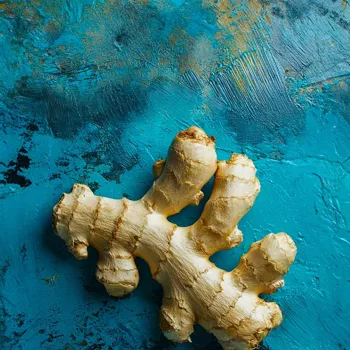
It's often used in baking and in spice blends. Fresh ginger should be stored in the refrigerator, wrapped in a paper towel or placed in a plastic bag. Ginger powder should be stored in an airtight container in a cool, dark place. This commonly used spice is a must have in almost every Indian home.
Garlic: versatile ingredient with health benefits, needs proper storage
Garlic (Lahsun), like ginger, is used both as a cooking ingredient and for it's health benefits. A strong flavor that can give many different dishes character, it is quite common. The flavor profile of the garlic changes depending on preparation, such as being roasted or even boiled.
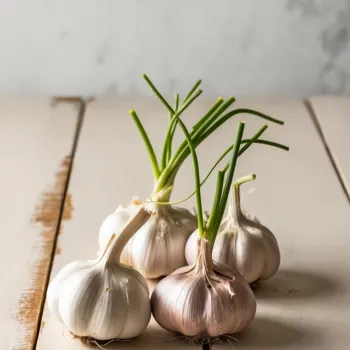
If stored properly it can last a long time. It should be stored in a cool, dark place (not necessarily the refrigerator) with good ventilation, similar to potatoes and onions.
Cinnamon adds warmth to dishes, comes in sticks or powder, used in baking
Cinnamon (Dalchini) is a sweet and fragrant spice that adds warmth and complexity to both sweet and savoury dishes. Cinnamon comes in two forms: sticks (also known as quills) and ground powder. Cinnamon sticks are great for infusing flavour into liquids like milk, tea, or stews.

Ground cinnamon is commonly used in baking, desserts, and spice blends. High-quality cinnamon often possesses a distinctly sweet and floral aroma. Store cinnamon sticks and ground cinnamon in airtight containers in a cool, dark place. Cinnamon is often used in baking desserts such as cakes
Fenugreek: versatile spice for Indian cooking, adds unique flavor
Finally, we have Fenugreek (Methi). Fenugreek is a spice with a slightly bitter and sweet flavour. Both the seeds and the leaves are used in Indian cooking. Fenugreek seeds are often tempered in hot oil or dry roasted before being added to dishes.
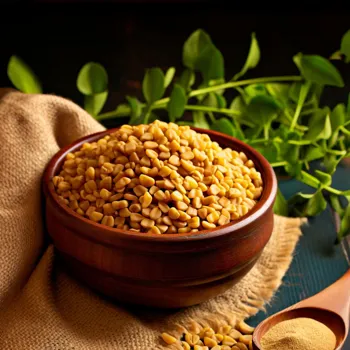
They are commonly used in curries, dals, and vegetable dishes. Fenugreek leaves (both fresh and dried) add a unique flavour to dishes like saag (leafy green dishes). Store fenugreek seeds and leaves in airtight containers in a cool, dark place.
Because of its use in both sweet and savory, this should be added to a staple list in kitchens.
AI Generated Content. Glance/InMobi shall have no liability for the content

